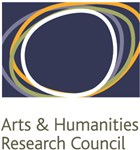Combining gender and classifiers in natural language
Workshop on Gender and Classifiers: Areal and Genealogical Perspectives
Following our highly successful Workshop on Gender and classifiers: Cross-linguistic perspectives on the typology of nominal classification systems in 2014, this Workshop on Gender and Classifiers: Areal and Genealogical Perspectives will look more closely at the areal and genealogical distribution of gender and classifiers in the languages of the world.
The workshop will take place 26-27 January 2015, Max Planck Institute for Psycholinguistics, Nijmegen, The Netherlands as part of the project Combining gender and classifiers in natural language.
Background
Certain types of classification system are typically associated with a language family or a linguistic area and we are interested in evidence which confirms or contradicts these tendencies. Many Indo-European languages have a two-term or three-term gender system with a masculine-feminine distinction, where a subset of the nouns are allotted to their genders based on biological sex. In Africa the situation is different. While Afroasiatic languages (e.g. Arabic, Somali, Berber) have two-term gender systems build on a masculine-feminine contrast, in Niger-Congo languages (e.g. Swahili, Chichewa, Eegimaa) larger systems are prevalent including a gender for either humans or animates. Southeast Asian languages (e.g. Chinese, Burmese, Vietnamese) typically have numeral classifiers, which essentially specify counting units. The usual Australian gender system has four distinctions, one of them being a gender for vegetables. If Australian languages have classifiers, they tend to be noun classifiers rather than numeral classifiers. Many languages in the Amazon area (e.g. Miraña, Tucano, Tariana) have been reported to have complex nominal classification systems mid-way between gender and classifiers.
For this workshop we solicited contributions which address the morphology, morphosyntax, syntax or semantics of nominal classification systems from an areal or a genealogical perspective. We are especially interested in languages, language families and areas in which gender and classifiers occur in combination. Abstracts dealing with such languages, language families or areas were particularly welcome.
Programme
26 January 2015
| 09.00 - 09.25 | Welcome coffee |
| 09.25 - 09.30 | Greville Corbett: Welcome and introduction |
| 09.30 - 10.15 | Keynote: Gunter Senft: Gender and classifiers: A survey on their geographical distribution |
| 10.15 - 10.45 | Greville Corbett and Sebastian Fedden: Gender and classifiers as co-occurring systems: A first typology |
| 10.45 - 11.15 | Alexandra Grandison: The relationship between noun categorisation and perceptual categorisation: A developmental and cross-linguistic approach |
| 11.15 - 11.45 | Coffee break |
| 11.45 - 12.15 | Kang-Suk Byun, Inge Zwitserlood and Connie De Vos: Classifiers and gender in sign language – the case of Korean Sign Language |
| 12.15 - 12.45 | One-Soon Her, Hui-Chin Tsai, Kun-Han Lin, Marc Tang and Meng-Chang Lee: Numeral bases and numeral classifiers in SMATTI: A typological sandwich |
| 12.45 - 13.45 | Lunch break |
| 13.45 - 14.15 | Francesca Di Garbo: An areal typology of gender in Africa |
| 14.15 - 14.45 | Alex Cobbinah: Animacy agreement in Baïnounk languages (Casamance) as an areal feature |
| 14.45 - 15.15 | Coffee break |
| 15.15 - 15.45 | Marcin Kilarski and Matthias Passer: Canonicity and functionality of nominal classification devices |
| 15.45 - 16.15 | Hiram Ring: Northeast India as a contact zone: evidence from gender and classifier systems |
27 January 2015
| 09.30 - 10.30 | Keynote: Maria Polinsky: Reconstructing noun classifications in the absence of diachronic data |
| 10.30 - 11.00 | Coffee break |
| 11.00 - 11.30 | Olga Krasnoukhova: Nominal classification in South American indigenous languages: How common is canonical, how rare is unusual |
| 11.30 - 12.00 | Stephanie Farmer and Martine Bruil: Gender and noun classifiers in two Western Tukanoan Languages |
| 12.00 - 12.30 | Zachary O’Hagan and Lev Michael: On exuberant noun categorization in Matsigenka (Arawak): Gender, animacy, and a multiple classifier system |
| 12.30 - 13.30 | Lunch break |
| 13.30 - 14.00 | Xavier Bach: Classifiers and gender in South-Halmahera-West-New-Guinea, Austronesian |
| 14.00 - 14.30 | Michael Franjieh: Possessive classifiers in Vanuatu: From relational to possessed classifiers |
Project members
Prof Greville G. Corbett
Dr Matthew Baerman
Dr Dunstan Brown (University of York)
Dr Sebastian Fedden
Dr Timothy Feist
Consultants:
Prof Maria Polinsky (University of Maryland)
Prof Gunter Senft (Max Planck Institute for Psycholinguistics, Nijmegen)
Period of award:
April 2013 - May 2016
Funder
Arts and Humanities Research Council (AHRC)
TOP

